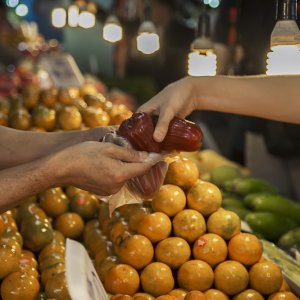
McDonald’s New Guidelines for Future Post-COVID-19
 By Daniel González | Senior Writer -
Fri, 05/15/2020 - 18:02
By Daniel González | Senior Writer -
Fri, 05/15/2020 - 18:02
As with other areas of the retail sector, the way we consume fast-food products will not be the same after COVID-19. McDonald’s, the world’s largest restaurant company, has taken a step forward to position itself in the new scenario, reported The Wall Street Journal. The company based in San Bernardirno, California, has sent a 59-page letter to its franchise owners in the US with clear guidelines on how to cope with the near the future. For the time being, the specifications are aimed at US stores, although they could be applied in markets like Mexico. Among those guidelines, the brand requires different substantial changes in restaurants, like the elimination of beverage dispensers, the installation of doors that can be opened with the feet to avoid hand contact, the use of double-sealed bags on take-out products, the delivery of products directly to customers’ tables, the cleaning of bathrooms every 30 minutes and the imposition of social distancing inside the restaurants.
The idea of McDonald’s is to limit as much as possible the contact between customers and workers in restaurants. The restaurant proposes the installation of new machines to collect products that, in turn, will also be cleaned after each use. Each table, according to The Wall Street Journal, will have a sticker stating the last time it was disinfected, while all employees will be required to take their body temperature before the start of each shift, as well as to wear gloves and masks and to respect the safety distance inside the kitchens.
The menu, aimed exclusively at franchise owners in the US, may become the model used by McDonald’s in the rest of the world, where it recently began opening its restaurants depending on the legislation of each country. Now, the company’s main concern is to meet the enormous customer demand. In France, for example, many restaurants were unable to meet that demand once they returned to normality, mainly because the supply chain has broken down in many parts of the world as a result of COVID-19.
In Mexico and following the government’s recommendations, McDonald’s decided to close 13 percent of its restaurants, most of them located in shopping centers and malls. In addition, the company relied on food delivery applications such as Rappi, Uber Eats and DidiFood to deliver food to customers.
According to Euromonitor International, in 2019 McDonald's controlled 45 percent of the hamburger market in Mexico, a market that grew 26 percent between 2014 and 2019 and is currently valued at US$720 million.
















